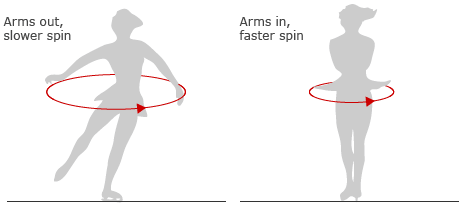| Back |
Home |
Next |
The Physics of Skating on Ice
| Friction The coefficient of friction μ, being extremely low on ice skates (between 0.0046μ and 0.0056μ), is a contributing factor in the ability of ice skaters to reach speeds in excess of 20mph.  - http://howtohockey.com While scientists haven't been able to discern specifically why the coefficient of friction on ice is so low, the leading theories have to do with there being a thin layer of fluid that is created between the skate and the ice, which causes a dramatic reduction in friction. |
Angular
Momentum Another physical factor in the way hockey players skate is angular momentum For instance, centripetal acceleration causes players who lean into the direction they are turning to gain speed.  - http://howtohockey.com Slightly differing from the technique of hockey players, figure skaters also incorporate angular momentum in their physical actions, a huge part of their skill set requires manipulation of inertia. Inertia is what allows people on ice skates to spin at high and low velocity by either reducing their inertia (to speed them up) or enlarging it (to slow their spin down).  - http://news.bbc.co.uk |